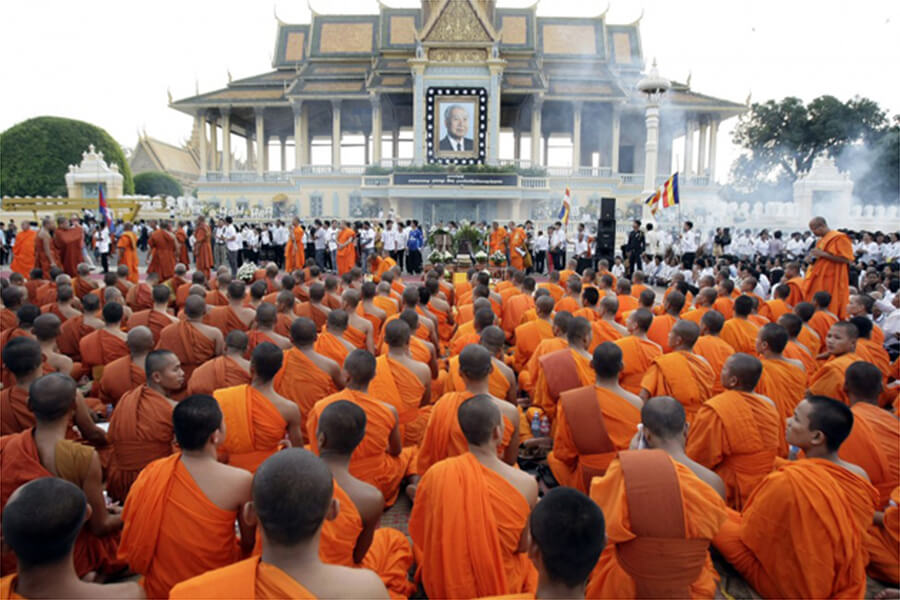According to the research of global religion conducted in 2010, Theravada Buddhism is the official religion in Cambodia, accounting for 97% of Cambodia’s population, followed by Islam (2%), folk religion (0.5%), Christianity (0.4%), and no religion (0.2%). Buddhist monastery and Sangha, along with essential Buddhist teachings such as samsara and meritorious accumulation are the centers of religious life in Cambodia and they also interact with indigenous beliefs such as the central role of ancestors and spirits in order to form the unique characteristics of Cambodian religion.
Buddhism in Cambodia
Buddhism has existed in Cambodia since at least the fifth century AD, and even some documents suggested that the time should be from the third century BC.
Cambodia is a well-known Buddhist country with about 97% of the population following Hinayana Buddhism which has been officially recognized from the end of the 13th century and then has become the identity and cultural base of the Cambodian. Hinayana Buddhism plays an indispensable role in the social community with many important functions in terms of culture, society, spirituality, and education. Therefore, Hinayana Buddhism was recognized as the national religion under Article 43 of the Cambodian Constitution. Moreover, it also can be seen in the national slogan of Cambodia: “Nation, Religion, King” which shows that Buddhism is really important to the Khmer community because it has been engraved in belief and become a part of the Khmer identity.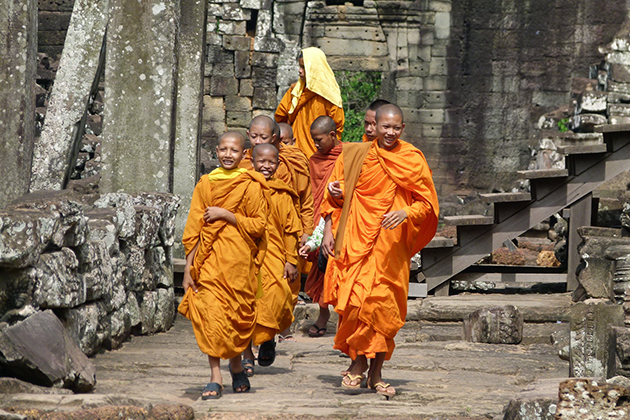
Buddhism in Cambodia suffered enormous damages during the Khmer Rouge from 1975 to 1979 when the religions were prohibited; persecutions and temples were destroyed. It was estimated that 50,000 monks died or were killed during this period.
Nowadays, Buddhism is an influential force in Cambodian religion and in the daily life, and it has been still rebuilt after many leaders and preachers were killed during the Khmer Rouge. In 2006, it was estimated that there were about 60,000 Buddhists in Cambodia; and a lot of the temples have been reconstructed to meet the religious demand of the local people.
It cannot be denied the importance of Buddhism in the lives of the Khmer, both in rural and urban areas. The main teachings of the Buddha emphasize doing good deeds and accumulating virtue. From ancient times, Buddhist temples have conducted many functions such as social, spiritual, cultural and educational services. In addition, the temples are also considered as the home for the elderly, recreation centers, meeting places, resting places for visitors, orphanages, and funeral homes. Furthermore, most of the annual Cambodian festivals are related to Buddhist rituals, including Choul Chnam (Cambodian New Year), Pchum Ben (annual ceremonies to honor ancestors and wander spirits), Vaishakh Purnima (Buddha’s Birthday).
Christianity in Cambodia
The mission of indoctrinating Christianity in Cambodia was made by Gaspar da Cruz, a Portuguese member of the Dominican Order in 1555-1556. According to his opinion, the trip failed completely because he discovered this country governed by the king and officials was nearly impossible to make a change. No one dared to convert without the King’s permission so that he had to leave in frustration.
Although Cambodia became a French colony in the nineteenth century, Christianity made little impact on that country. By the end of 1979, 80% of the religious followers in Cambodia were executed during the horror time of the Pol Pot genocide.
One percent of Cambodia’s population is identified as Christians, in which Roman Catholicism constitutes the largest group, followed by the Protestant community. There are approximately 20,000 Catholics in Cambodia making up 0.15% of the population. Other Christian branches include the Baptist, the Christian and Missionary Alliance, the Methodist Movement, the Jehovah’s Witness, the Pentecostal Movement, and the Mormon Church.
Based on the research of Pew Research Center in 2010, there are about 0.4% of the Cambodian population following Christianity.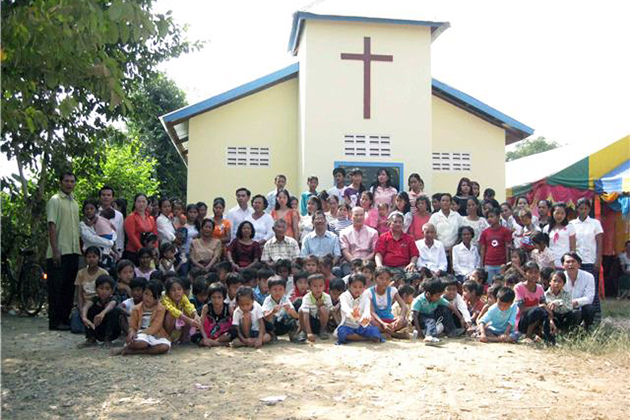
Islam in Cambodia
Islam is the religion of the majority of the Cham (also known as Khmer Islam) and a few Malaysian people in Cambodia. Each Muslim community has a Hakem – the community leader and a temple, an imam – a prayer and a Bilal – who calls upon the faithful to come to the daily prayers. The traditional Cham people have still retained many of the traditions and rituals of Islam or pre-Islam. For them, Allah is supposed to be an omnipotent god but they also recognize other non-Muslim practices. The Islam dignitaries of the traditional Cham always wear white and shave their heads and faces. Besides, the Cham people believe in magic, the devil, and supernatural powers and they highly appreciate the application for the magic to avoid illnesses or fierce deaths.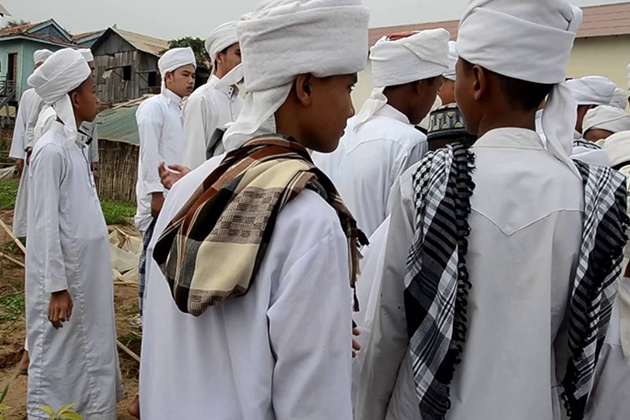
Today, Muslims can normally practice their beliefs in public, which began in the days of the People’s Republic of Cambodia when Islam has been freely allowed in a similar way to Buddhism. Cham people are also given the same democratic rights as all Khmer citizens, with the right to vote and be elected as politicians.
Till 2010, 2% of the Cambodian population follows Islam, which makes this religion become the second largest one in Cambodia.
Judaism in Cambodia
There is a small Jewish community of over 100 people in Cambodia. Since 2009, they have had a Chabad house in Phnom Penh.
Folk Religion & Belief in Cambodia
Among the tribal groups in the plateau with about 150,000 people, most of which have a local religious system. The Khmer Loeu are simply described as animists, but most indigenous groups have their local deities. In general, they consider that their world is full of invisible spirits (commonly known as Yang), some benevolent, others malevolent. They build strongly spiritual relations with rice, earth, water, fire, rocks, paths, etc. The shamans, sorcerers or experts in each village have their own special power to contact these spirits and specify how to appease them.
In times of crisis or change, animals were sacrificed to soothe the anger of the spirits. According to the indigenous beliefs, illness is usually attributed to the devils or ghosts so some tribes have special medical men or shamans treat the disease. In addition to the spiritual beliefs, the Khmer people also put their faith in prohibitions on many subjects or practices. Among the Khmer Loeu, Austronesian groups (Rhade and Jarai) have a decentralized system of spiritual development with a supreme leader.
Nowadays, the number of the people follows folk religion in Cambodia accounting for 0.5% of this country’s population.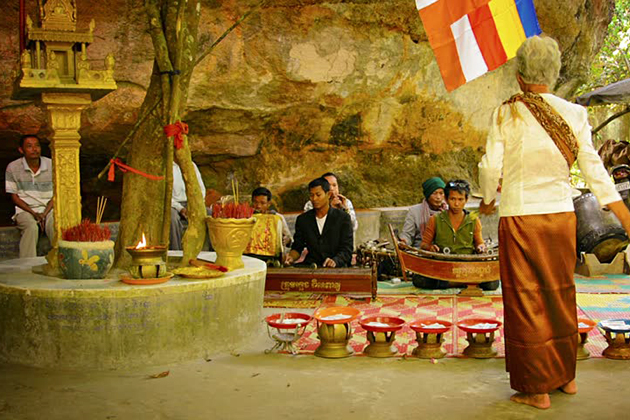
No Religion in Cambodia
In Cambodia, about 0.2% of the population does not follow any religions. However, they still practice the indigenous beliefs.

